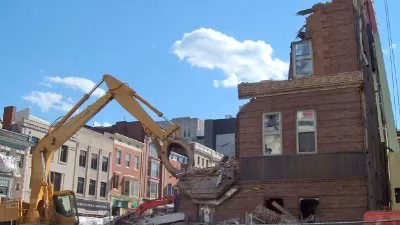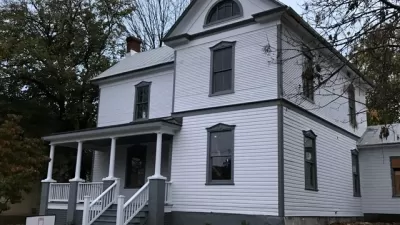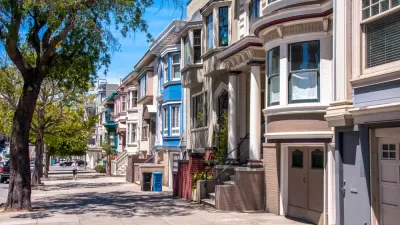In a rebuttal to criticisms leveled at historic preservation districts, Stephanie Meeks of the National Trust for Historic Preservation argues that historic preservation has value and can aid in creating affordable housing.

Writing in CityLab, Stephanie Meeks asks that critics who claim that historic preservation districts are contributing to a lack of affordable housing in our cities take a step back and find "ways to increase density and affordability in cities that don’t involve destroying the historic fabric of our communities."
Meeks writes that the benefits from our historic neighborhoods are both tangible and intangible. They connect residents to their neighborhoods and to those who came before, creating what Meeks describes as "living history lessons." In addition, many of our older neighborhoods hold opportunities for the adaptive reuse of the existing building stock to create multi-family units. Creating density in older neighborhoods doesn’t always require tearing down existing buildings to build taller.
Economists such as Edward Glaeser have argued that historic districts prevent affordability by limiting tall and dense new development that could fit everyone. But, as the urban planner Jeff Speck points out in Walkable City, 'economists don’t seem to have fully processed one thing the designers know, which is how tremendously dense a city can become at moderate heights.'
FULL STORY: Why Historic Preservation Districts Are Crucial to Cities

Study: Maui’s Plan to Convert Vacation Rentals to Long-Term Housing Could Cause Nearly $1 Billion Economic Loss
The plan would reduce visitor accommodation by 25,% resulting in 1,900 jobs lost.

North Texas Transit Leaders Tout Benefits of TOD for Growing Region
At a summit focused on transit-oriented development, policymakers discussed how North Texas’ expanded light rail system can serve as a tool for economic growth.

Why Should We Subsidize Public Transportation?
Many public transit agencies face financial stress due to rising costs, declining fare revenue, and declining subsidies. Transit advocates must provide a strong business case for increasing public transit funding.

How to Make US Trains Faster
Changes to boarding platforms and a switch to electric trains could improve U.S. passenger rail service without the added cost of high-speed rail.

Columbia’s Revitalized ‘Loop’ Is a Hub for Local Entrepreneurs
A focus on small businesses is helping a commercial corridor in Columbia, Missouri thrive.

Invasive Insect Threatens Minnesota’s Ash Forests
The Emerald Ash Borer is a rapidly spreading invasive pest threatening Minnesota’s ash trees, and homeowners are encouraged to plant diverse replacement species, avoid moving ash firewood, and monitor for signs of infestation.
Urban Design for Planners 1: Software Tools
This six-course series explores essential urban design concepts using open source software and equips planners with the tools they need to participate fully in the urban design process.
Planning for Universal Design
Learn the tools for implementing Universal Design in planning regulations.
City of Santa Clarita
Ascent Environmental
Institute for Housing and Urban Development Studies (IHS)
City of Grandview
Harvard GSD Executive Education
Toledo-Lucas County Plan Commissions
Salt Lake City
NYU Wagner Graduate School of Public Service





























